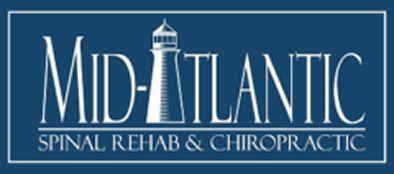Drowsy Driving Causes 8 Times As Many Car Accidents As Previously Thought
As my avid blog followers are already aware I am a Baltimore Chiropractor with three Baltimore Chiropractic clinics in Baltimore, MD. We treat patients with primarily acute musculoskeletal pain. Mainly, we see lots of patients with cervicogenic headaches, axial spine pain, neck pain, mid back pain, and lower back pain. While many of our patients are weekend warriors who strain their necks and backs going too “hard” on a weekend, we also see a lot of auto accident injury patients in our clinics. These patients typically present with whiplash symptoms that may include (but are not necessarily limited to) post-traumatic headaches, cervical (neck) sprain/strain injuries, thoracic spine (mid back) sprain/strain injuries, and lumbar spine (lower back) sprain/strain injuries. We also see lots of extremity injuries depending on the type of crash that these patients endure. We see shoulder, elbow, wrist, hand, finger, hip, knee, ankle, foot, and toe injuries as well.
One of the things that we see this time of year is an increase in the number of injuries sustained in Baltimore auto accidents due to drowsy driving. With daylight savings time beginning last week on March 11, we end up having to “spring ahead” and we lose an hour of sleep. Although its great to have more daylight to enjoy following a work day, the first week or so following daylight savings is usually perilous as more and more Americans, particularly in Baltimore, are deprived an additional hour of sleep. This causes them to delay their reaction time on the road and to cause more motor vehicle collisions than would typically be expected.
Using camera footage from inside the vehicles of more than a thousand drivers AAA conducted a study to try and determine just how likely it is for drowsy driving to be the main culprit for car crashes. AAA concluded that drowsiness was a factor in approximately 9.5-10.8% of crashes, which is about eight times more common than was originally determined by the NHTSA (National Highway Traffic Safety Administration) which put the number at 1.4%. AAA suggests that the reason for the disparity in the research is likely due to the fact that police officers who arrive on the seen and help to determine causation can have a difficult or near impossible time trying to determine if drowsiness is a factor unless the driver admits it (which they rarely do).
While doctors generally suggest that adults of driving age sleep 6-8 hours a night, it is thought that more than 35% of drivers on the roads sleep less than that. With less sleep, cognition and reaction time is impaired, which can leads to more car crashes in Baltimore and across the U.S.
Contrary to popular belief, a cup of coffee, a blaring radio, or an open window is not enough to substantially alter a person’s degree of focus for any more than a few moments. The only remedy to drowsiness is sleep. AAA points out that we as a culture need to move away from the notion that its somehow “cool” to stay up late and get up early. Simply put, there’s no substitute for getting ample rest before getting behind the wheel.
AAA suggests that if you must drive you can try to take a short nap before hand. Even 30 minutes of rest can go a long way to enhancing your concentration while you are on the road. They also suggest trying to avoid driving during over night hours where your body is used to sleeping. AAA also suggests that we all get in the habit of “disengaging” from our electronic devices such as smart phones and TVs at least an hour before bed time to allow our bodies to relax which helps us get a more restful sleep.
If you, or someone you know, has been injured in a Baltimore auto accident and have developed headaches, neck pain, or back pain, please contact Mid-Atlantic Spinal Rehab & Chiropractic at (443) 842-5500. We’ll have your back on the road to recovery.
Dr. Gulitz
